The history of cartography is the history of human exploration, making sense of the world in pursuit of science and political boundaries. Geography also plays a part in artistic or personal endeavours, in the creation of satirical or creative map-making, or the recording of family history.
 Above: before and after the restoration of an antique map by our paper conservator
Above: before and after the restoration of an antique map by our paper conservator
Early cartography dates back to ancient civilisations. One of the oldest world maps called the “Imago Mundi” or “Babylonian Map”, dates back to between 700 and 500 BC and was carved in stone. The culturally diverse and highly scientific history of map making is profound with an ever-evolving understanding of the globe, with further details of the Americas or “new world” allowing such documents to grow in complexity from the 15th century onwards, most often printed or drawn on paper.
 Above: a detail from a 1575 map of Alexandria
Above: a detail from a 1575 map of Alexandria
Antique maps have broad appeal at auction, these historically interesting pieces create a talking point with their remarkably accurate, or inaccurate, interpretations of the world. Their adventurous attraction makes them so popular that in 2010 the British Library exhibition entitled “Magnificent Maps: Power, Propaganda and Art” was their most popular exhibition to date, attracting around 227,000 visitors.
 Above: a plan of Rome by Antonio Tempesta, published by Giovanni Domenico de Rossi in 1645
Above: a plan of Rome by Antonio Tempesta, published by Giovanni Domenico de Rossi in 1645
However, collectible cartography is not limited to world maps, in this area you may also come across vast amounts of artwork and documentation, including city plans, regional landscapes, surveys, personal maps, educational tools, train lines, wartime documents and astronomical or star maps.
 Above: a detail from a celestial map of the northern hemisphere by Albrecht Dürer, 1515
Above: a detail from a celestial map of the northern hemisphere by Albrecht Dürer, 1515
Cartography can also be sentimentally valuable, with personal connections forming with well-used maps from road trips and holidays, documents from a life of travel, or even geographical works which share connections with a client’s family or childhood. These works on paper can be historic or contemporary, with even modern day maps being personally significant enough to be displayed alongside other artworks or photographs in a home.
 Above: a detail from a map of North America by Matthäus Seutter depicting the wildlife and topography of the landscape, 1730
Above: a detail from a map of North America by Matthäus Seutter depicting the wildlife and topography of the landscape, 1730
These important pieces are most often found on paper, which is one of the most vulnerable materials. Dangers which paper may face include:
- UV rays from sunlight, which causes a high rate of fading.
- High humidity, causing moisture damage, mould, and foxing.
- High temperatures, causing the paper to become extremely dry and brittle.
- Atmospheric particles, including nicotine, soot and smoke, causing yellowing or discolouration and the risk of decay from acidic or toxic particles.
- Acidic framing materials, including old backing boards, adhesives, or mounts which may deteriorate the paper.
 Above: a detail from a panorama of New York by John Bachmann, 1866
Above: a detail from a panorama of New York by John Bachmann, 1866
- Fire damage, which if not destroying the paper may increase the fragility of any affected areas and be at risk from acidic smoke staining on the surface.
- Water damage, disturbing the artwork and making artwork cockle and stain.
- Organic decay, depending on the age and material, the paper may be at risk of natural deterioration and require further protection from the atmosphere to slow this down.
- Accidental damage, such as tears, creasing and spillages.
- Foxing, a visual disturbance which presents as rusty brown spots across the page.
Following damage, a work on paper may be lost if there is no intervention. It is important to act fast following an incident and know what to look out for when it comes to the health of a paper artwork or document which has high monetary or sentimental value.
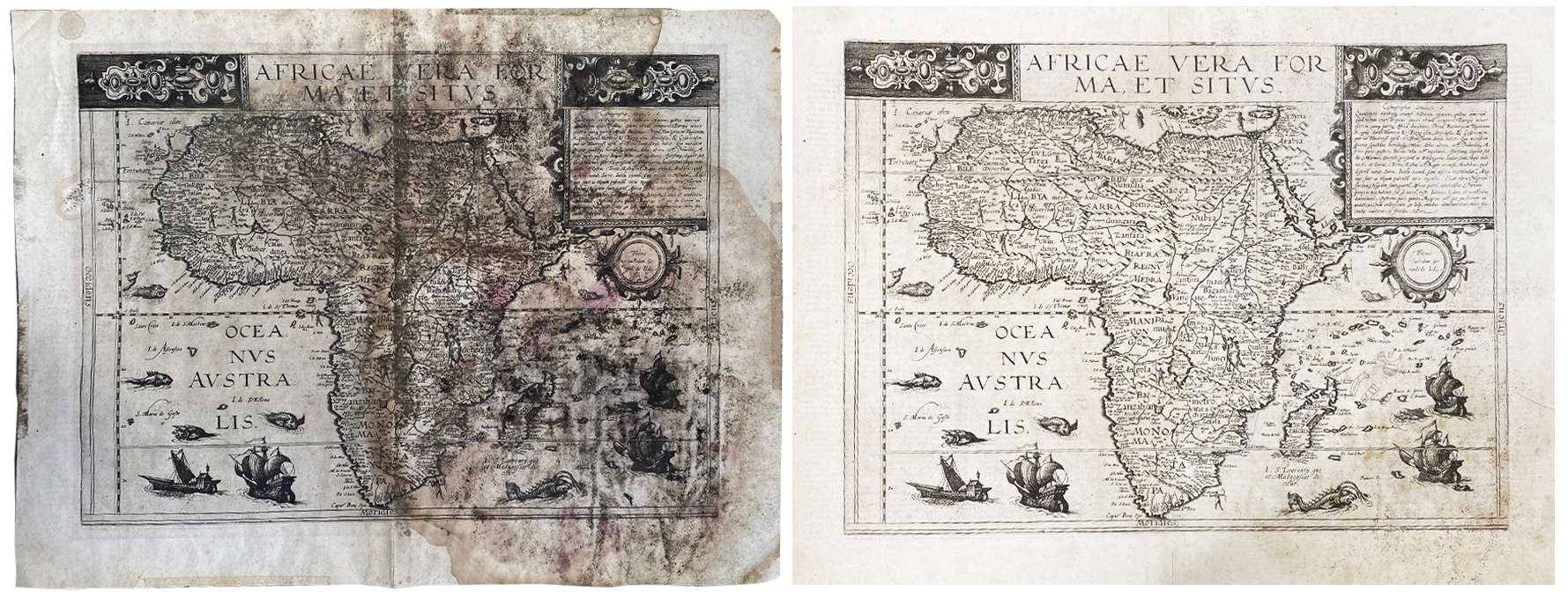
Even contemporary maps with many pins, stickers, or tears should be considered for restoration work if they are very important to the client. This would not take away any personal elements, but ensure that it is strengthened, protected and displayed in conditions which allow it to survive for future generations.
At Fine Art Restoration Company, our team of professional conservators have recently restored several important maps. The first was an 18th-century map of the Americas by John Senex which required cleaning. It was one of the earliest English maps of North America, produced in 1710, covering the Arctic to the Spanish Main.

This large antique map was cleaned of discolouration by our paper conservator. It was gently washed in conservation solutions, which were tailored to its specific material and inks. These conservation solutions are able to lift any foreign substances or atmospheric build-up away from the original document. This is important, as the build-up of historic dust or debris can contain harmful, toxic substances which will degrade the paper.
John Senex served Queen Anne as a master geographer and was one of the principal cartographers of the 18th century. The large map would have been one of the first to give the British public ideas about the geography of the United States and Canada, created from the very best sources. It was the earliest to give an accurate depiction of the Mississippi River and the great lakes. Interesting details are also included, such as notes placed where shipwrecks were found in the Bahamas.
The results of the restoration allowed this historic piece to be returned to its original condition, clearing the toxic dangers which had built up on the discoloured surface.
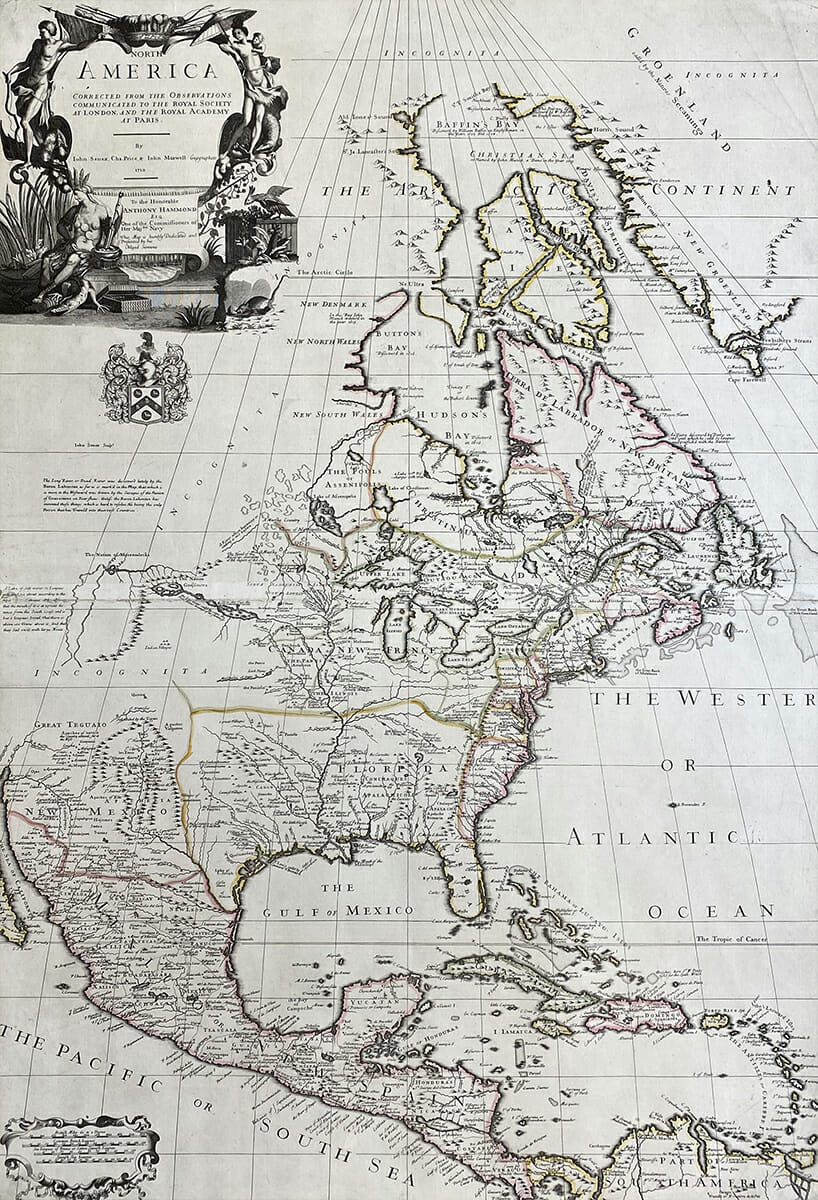
Another map which our paper conservator was able to clean of similarly harmful discolouration from smoke damage, is a 17th-century allegorical piece from a famous historic poem called the Poly-Olbion.
The epic poem was first published in 1612, this map was from the 1622 edition. It depicts the natural beauty and geography of England and Wales, without the interference of political boundaries featuring Glamorgan, Monmouthshire, Brecknockshire, Somerset and the Severn Estuary.
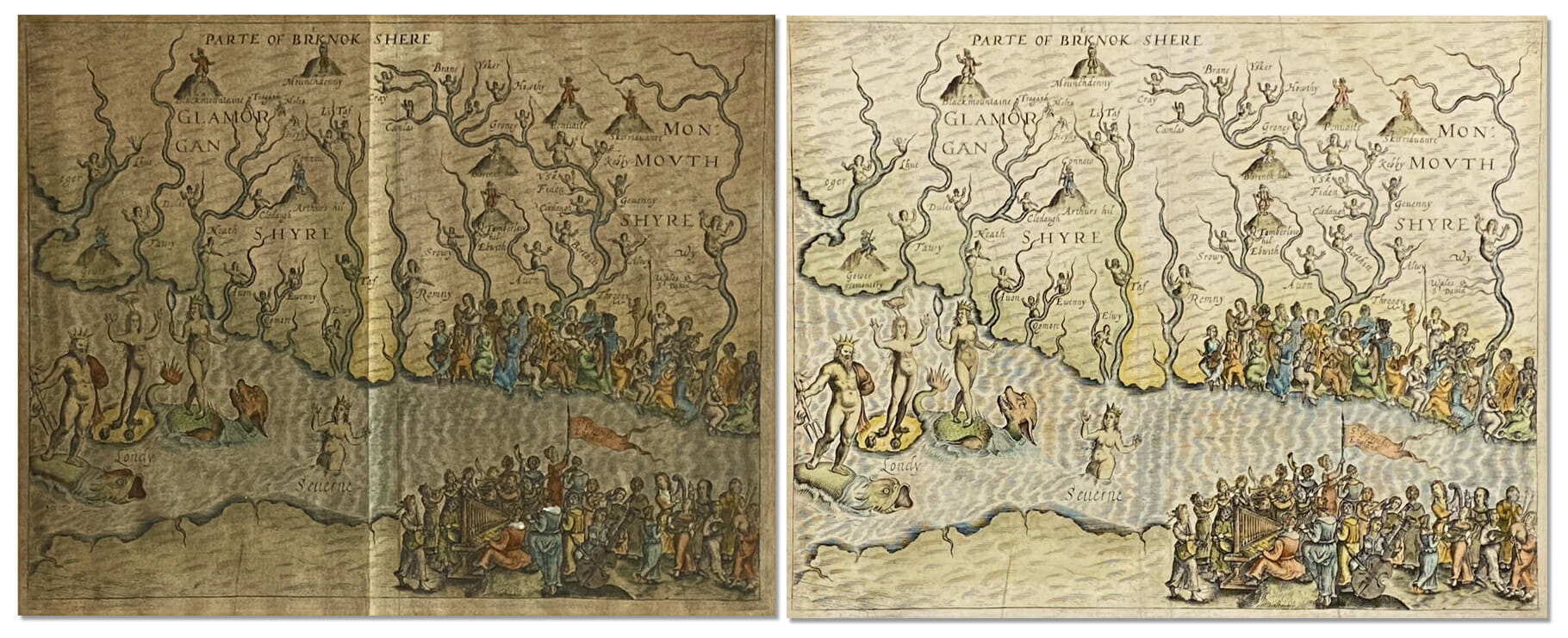
Not all maps which require restoration are traditionally historic, as there are many examples of paper documentation and cartography stemming from the world wars.
Our paper conservator restored a map which had been an important souvenir, taken from the Yalta conference held in 1945. This was one of three major World War II conferences and was attended by Franklin D. Roosevelt, Winston Churchill, and Joseph Stalin, to discuss the postwar reorganisation of Germany and Europe. The map was passed down from a family friend, who served as a Women’s Royal Navy Service first officer taking notes at the conference. Accidental damage had occurred, due to the fragility of the piece and mishandling. It has begun to tear in a number of places.

The client noted to us that they would prefer a restoration, which did not result in a pristine finish. They felt that the map should appear aged and bear some of the wounds of its history. Therefore, a gentle restoration focused only on the areas at risk and left the elements which gave it its story.
Cartography is professionally framed by our team with conservation-grade materials, in the same way, a traditional artwork would be. This is important as it ensures they are displayed with acid-free materials which are approved for the conservation of paper.
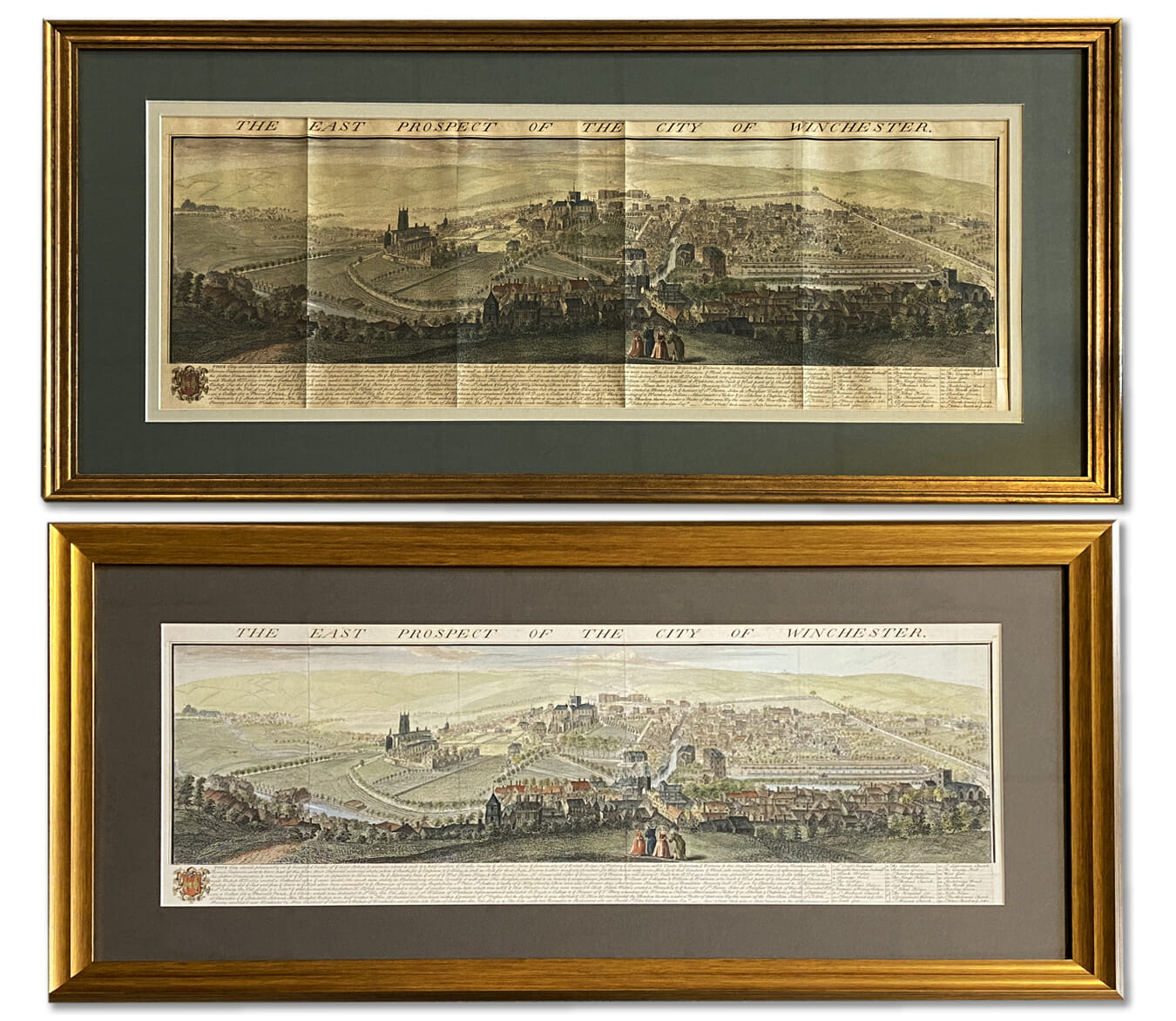
Frames for paper artworks should be airtight, to avoid any further contamination from the atmosphere. As works on paper are very vulnerable to UV rays, which can cause extreme fading to occur, conservation framing techniques can include specialist glazing. UV protective glass can offer between 70% and 99% filtering of any harmful sunlight exposure.
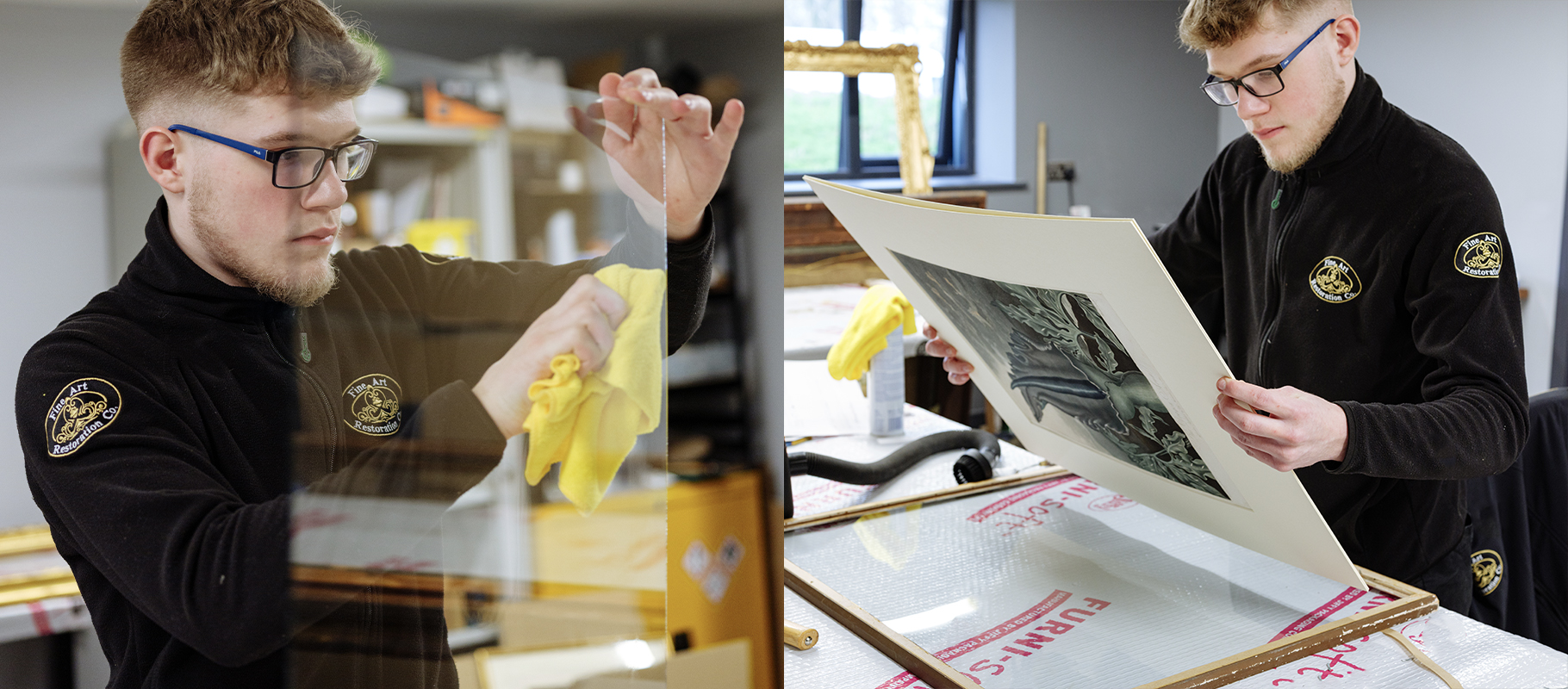
For enquiries relating to the cleaning or restoration of maps or any other form of cartography, please get in touch to discuss the preservation or restoration of such works.

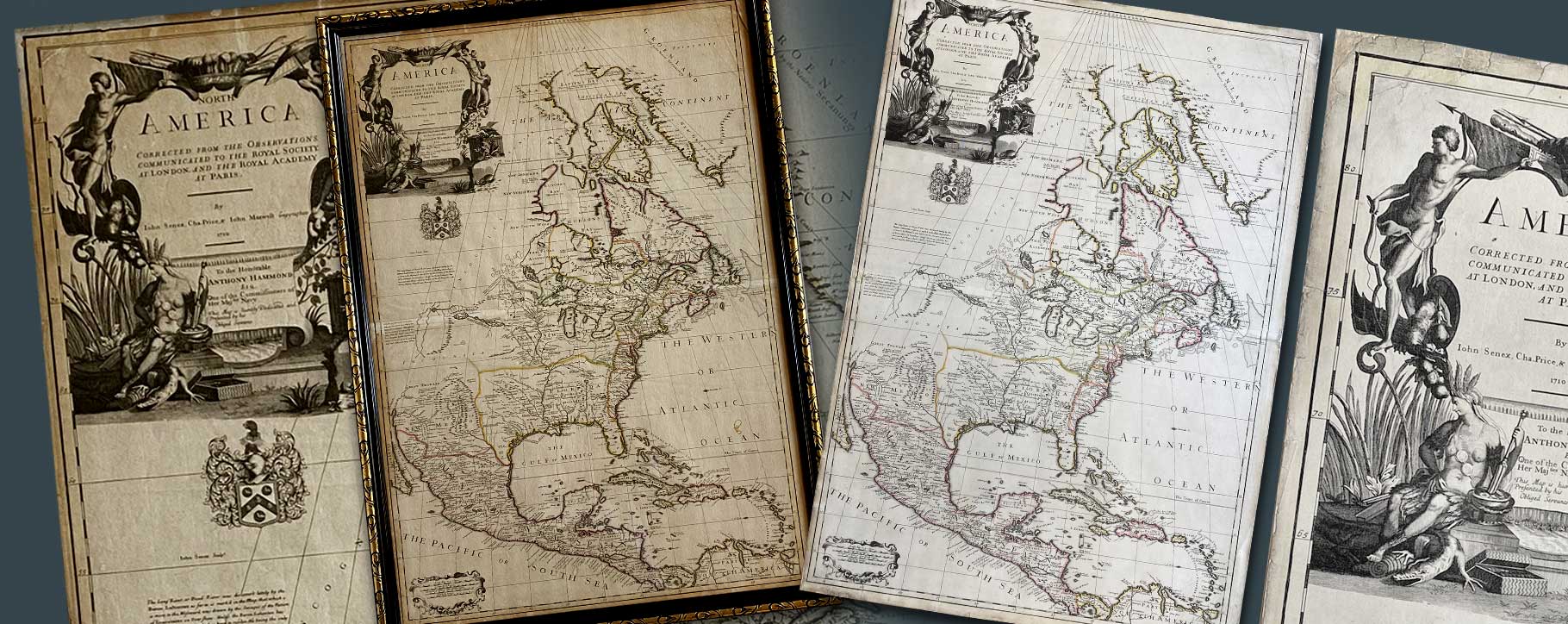 Above: before and after the restoration of an antique map by our paper conservator
Above: before and after the restoration of an antique map by our paper conservator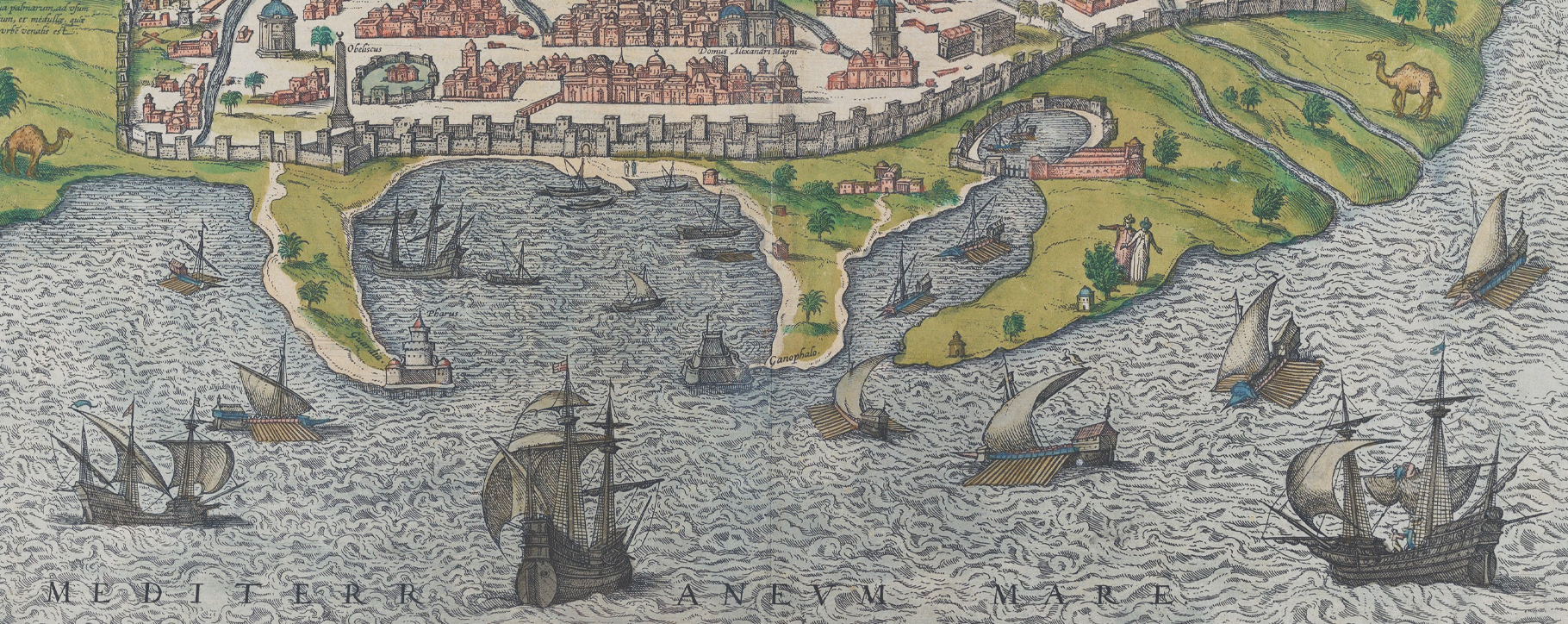 Above: a detail from a 1575 map of Alexandria
Above: a detail from a 1575 map of Alexandria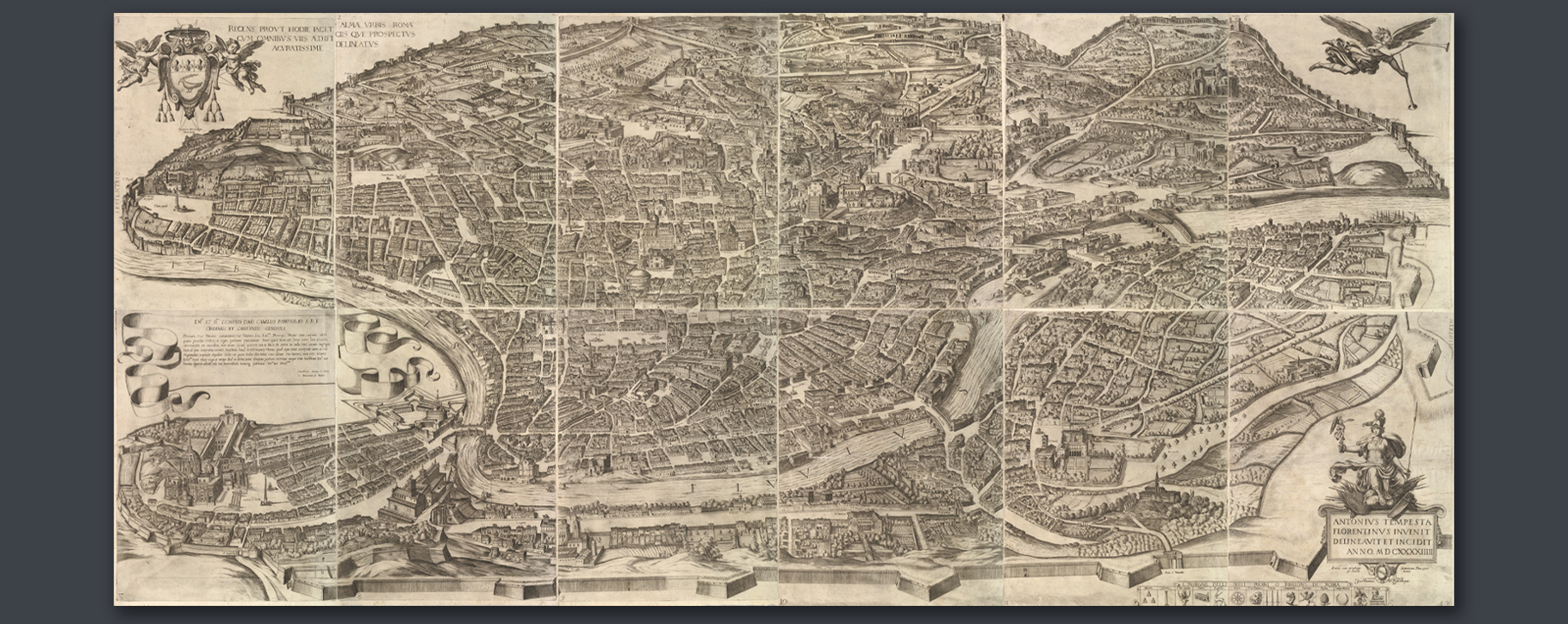 Above: a plan of Rome by Antonio Tempesta, published by Giovanni Domenico de Rossi in 1645
Above: a plan of Rome by Antonio Tempesta, published by Giovanni Domenico de Rossi in 1645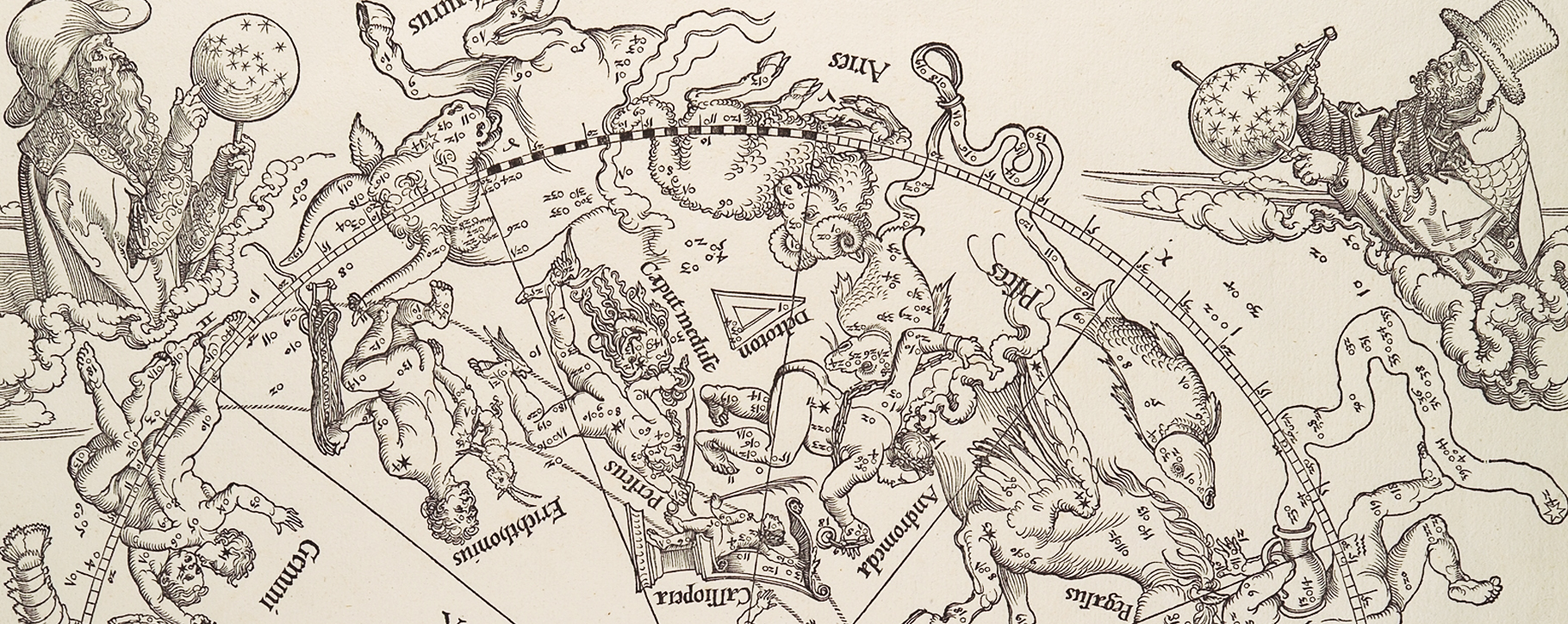 Above: a detail from a celestial map of the northern hemisphere by Albrecht Dürer, 1515
Above: a detail from a celestial map of the northern hemisphere by Albrecht Dürer, 1515 Above: a detail from a map of North America by Matthäus Seutter depicting the wildlife and topography of the landscape, 1730
Above: a detail from a map of North America by Matthäus Seutter depicting the wildlife and topography of the landscape, 1730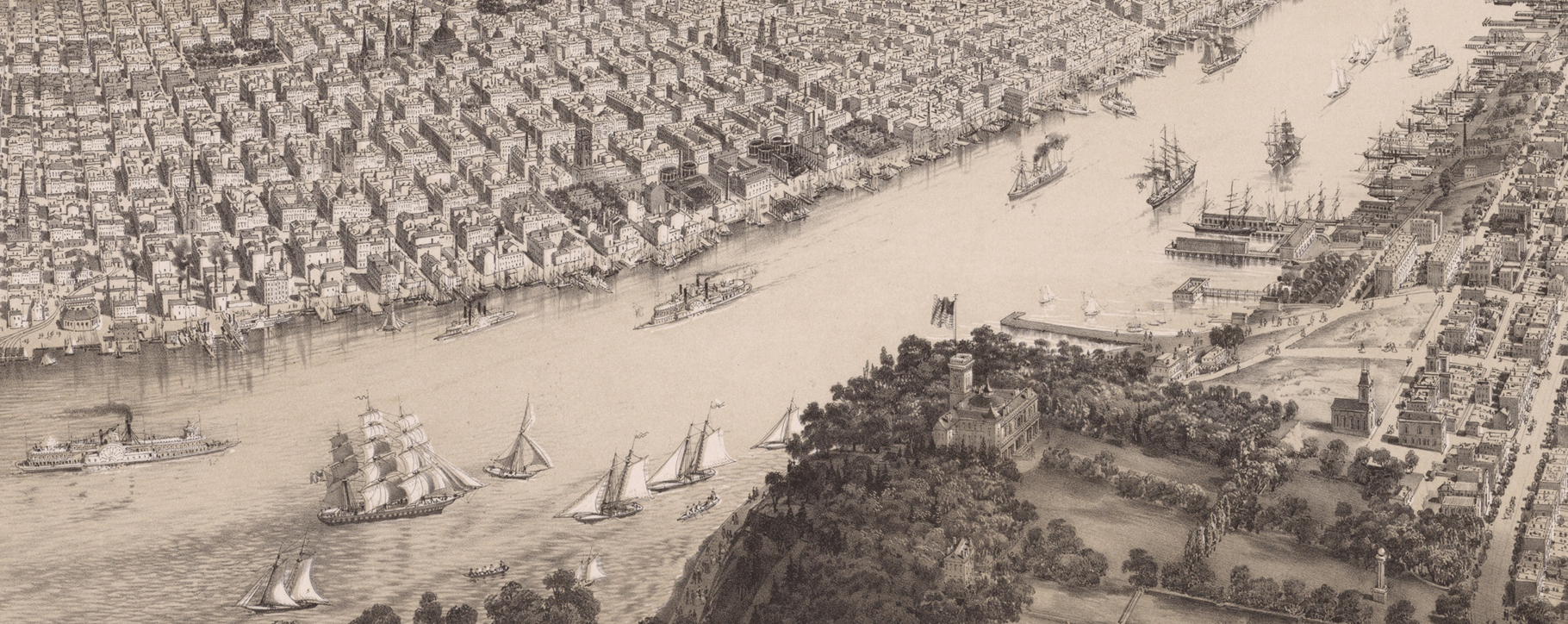 Above: a detail from a panorama of New York by John Bachmann, 1866
Above: a detail from a panorama of New York by John Bachmann, 1866




